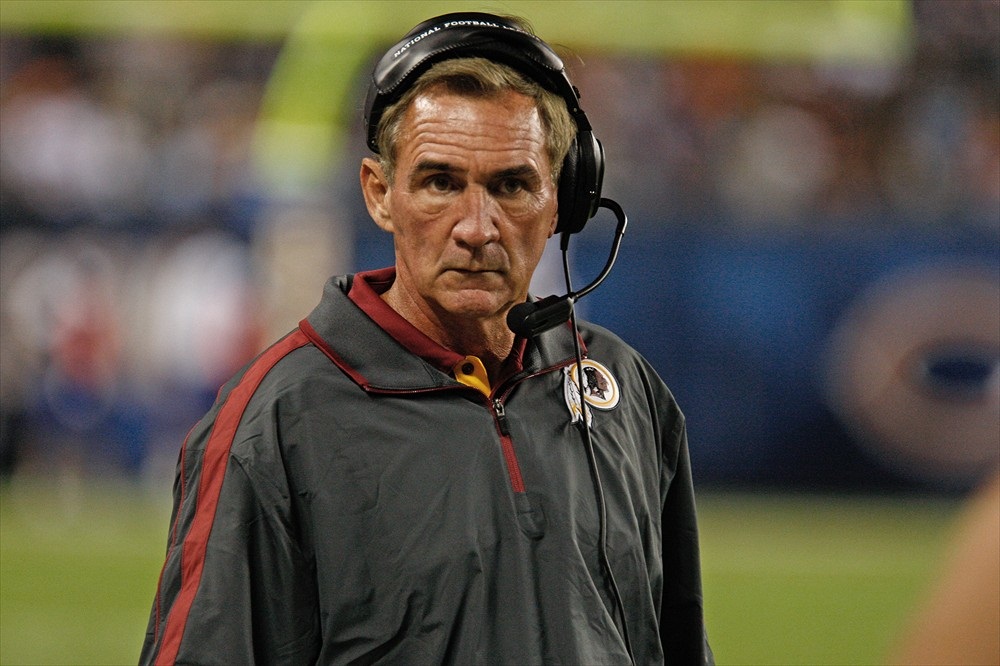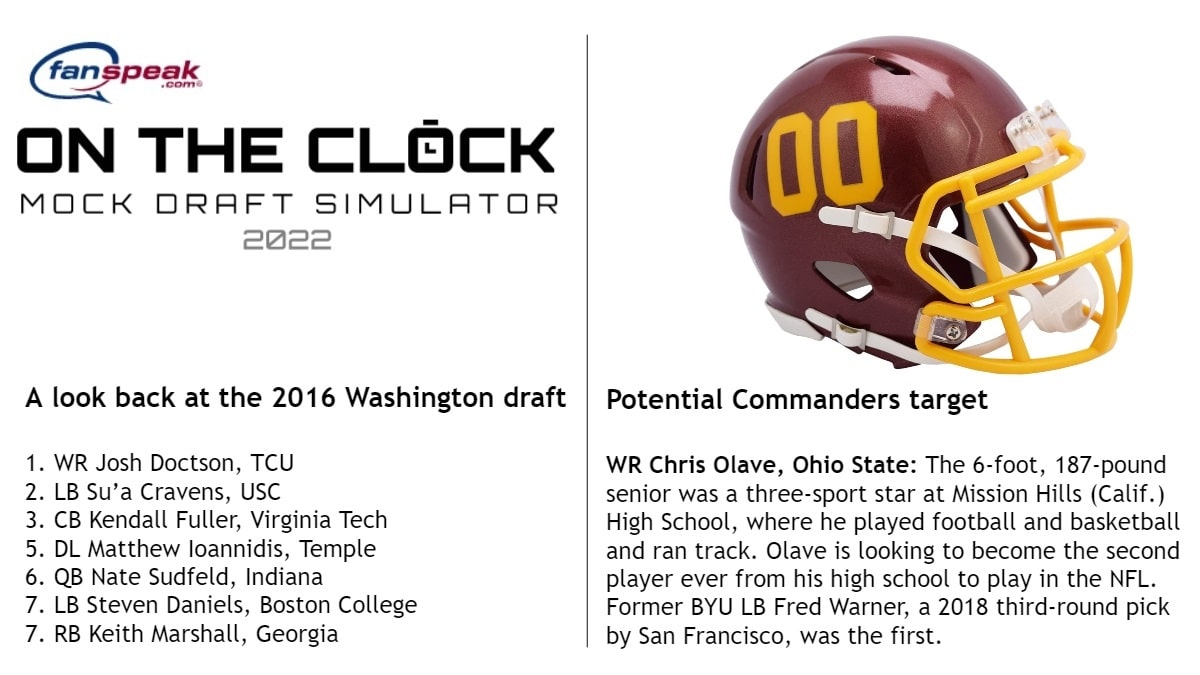Part III of a Q&A with an Orthopedic Surgeon on RGIII

Last week I had the opportunity to interview Orthopedic Surgeon Dr. David Geier about ACL surgeries and recovery times for athletes, with a primary focus on Robert Griffin III‘s situation. Though Dr. Geier was not personally involved with RGIII’s surgery or recovery process, he is the head of a major sports medicine practice in South Carolina, and performs well over 100 ACL surgeries a year.
Dr Geier has also assisted in the orthopedic care for both the St. Louis Rams and the St. Louis Cardinals. In addition he has been used as a medical expert for just about every major media outlet there is. The following quotes are from my conversation with him, and my thoughts are below his quotes.
Part I | Part II | Part III
Q: On what the Redskins can do to limit his exposure and vulnerability this training camp and season? 
A: It’s hard to say. I think the therapists involved and obviously the surgeon could give much more direction because they could see how he’s landing in practice or in the physical therapy gym. They can see how he’s cutting and doing agility drills on ladders and landing on some of the uneven balance balls and balance boards and things like that.
There’s ways to see if he’s actually using that knee normally or compensating by landing more on one side. I suspect they have been doing all of those types of things. Assuming that goes well, then you work the return to play process through practice.
Or maybe have him go at 50% speed, having him move around and cutting, but not going all out. You then gradually increase it more and more. The other part of it is a timing thing. There’s a time and a risk factor. When you balance the risk. The further out he is from surgery, the less the risk is going to be.
That’s true of any athlete. It gets to be weighing the benefit of him playing at a certain point versus the risk of re-injury. If they decide it’s not that big of a deal for him to have to play in pre-season, then I think that they’ll probably wait for the regular season when the benefit is higher and potentially the risk is a little bit lower. It’s tricky, as we have seen from reports about Derrick Rose. There’s not ever a 100% way to know when that risk is the lowest.
My Take: This is the most important thing for the Redskins, to value the risk versus reward. The Redskins are already pushing him out there and limiting his snaps. While they definitely want to build-up to a greater percentage of work and at a higher level, they have to be really careful here.
Obviously the player is going to want to push it, but the team has to do what is best for the player and team long term. Currently Griffin’s work has remained static, but it hasn’t even been a full week yet of work. It will be interesting to see how it plays out, and how much they have him doing before the season starts.
While the question was asked about RGIII this definitely applies to other ACL recoveries like RB Chris Thompson, S Brandon Meriweather and DE Chris Neild (though he’s almost at the 12 month mark). It could be that Meriweather was rushed back too soon, which is why he has been limited the last couple practices. Even Thompson is now sitting out some. Given how much more running and cutting these positions do than QB, it makes sense why their recovery is slower.
Q: Since Griffin will be playing ahead of the typical 9-12 month period where players are typically fully healthy, what should be expected of him this year from a physical standpoint?
A: That’s more of a coaching decision. What I would expect if it was one of my players and he was a spread or read-option quarterback, I would expect that you would notice if he doesn’t seem as confident on it at first. And you would expect that at eight, nine, ten months you would see a little more cutting, a little more bounce in his step – you would see his ability and his confidence on it grow.
I would think it would be challenging for a cutting quarterback who likes to move around. The ACL is a structure that provides rotational stability. You hear a lot of times with athletes after ACL surgery that they will say they just don’t feel confident on it or that they think about it. It takes a lot to overcome that. Those types of activities that he does tends to be those where they notice that. It takes time in doing it for that feeling to go away. And without being involved, I would tell you that I would expect that by Week 16 or 17, he will look like a very different quarterback than he will at Week 1, if he plays.
My Take: This is an interesting issue here. Confidence is obviously a big factor, and from his outward statements it is clear that this is not an issue for Griffin. The only concern there could possibly be overconfidence, where Griffin doesn’t try to take it slow and tries to do too much to soon and puts himself at risk for another injury.
Despite Griffin’s confidence, I think it is very likely that Dr. Geier is right here, that the Griffin we see at the beginning of the season, probably won’t be the same Griffin we saw before the injury and what he could be again at the end of this year.
Looking back at Griffin’s return from his primary ACL surgery while he was back at Baylor, Griffin started out slowly. His first three games back were his only games of the year under 60% completion percentage. While the third of those games was on the road versus TCU, the other two were easy games versus Buffalo and Sam Houston State. Griffin’s injury the previous year happened much earlier, so Griffin was about 11 months removed from surgery that time around, and still needed a couple of weeks to get back to normal.
Given the revision, LCL element and the truncated timeline it is likely that he may not be himself for the first two months back. That is just referencing his passing, his running ability could be very limited as well in that time frame.
Q: Does a Custom Brace significantly reduce the injury risks, and what limitations could it cause?
A: That’s a great question, and unfortunately the answer is – we don’t really know. There is actually surprisingly little data that these custom ACL braces significantly decrease your risk for re-tearing it. There’s some studies that show that they trend a little bit lower in injury risk but nothing statistically significant. And so a lot of us, especially after primary ACL’s, and I’m one of them, don’t make people wear those braces. After revisions, I will tell you that I typically do, just because the risk if you tear a revision graft, the risk is much more significant as we talked about earlier. I feel more comfortable at least suggesting to an athlete to consider one of those braces. Again, it doesn’t promise you that it’s going to stop every ACL tear, but even if it decreased it even slightly, is it worth it? Maybe!
At the pro level, when you’re talking about tens of millions of dollars with some of these players, a $1,500 brace may not be that big of an investment. Where most people wear them, quite honestly, is the youth athlete, high school athlete, college athlete or weekend warrior – that type of thing. Like I said, most of us don’t make athletes wear those routinely after their surgery, but you will get people, like I said earlier, that will tell you that first month or two back on the field they don’t feel quite right – it doesn’t feel 100% stable.
I think those do have a role in that first season back from a confidence standpoint, just to give them the little bit more reassurance and confidence in landing on it and cutting on it. I don’t like people wearing them the rest of their careers necessarily because there is some concern about does it slow down getting your muscle strength back because your knee starts to depend on that brace.
That’s sort of controversial, but I’m okay with it from a mental and confidence standpoint for the first year. With Griffin, again I’m not involved in the discussions, but I suspect that NFL player who makes a lot of money with a revision surgery, even if it decreases the risk just a little bit, will do that. I think that’s not surprising.
My Take: This I found to be very interesting, as I believe there is a general thought that at the very least braces dramatically reduce the risk of re-injury, but that definitely doesn’t look to be the case here. Now given that Griffin is coming back from a revision surgery, it is definitely smart for him to be wearing the brace this season.
Dr. Geier did give credence to the issue that has come out lately that Griffin shouldn’t wear the brace going forward after this season as it could end up doing more harm than good. Another interesting point is the brace seems to have a lot of value in just giving a player additional confidence on putting strain on the knee. That doesn’t seem to be an issue with Griffin, so if anything the brace may be the most beneficial to the fans.
Q: Final Question: Does the patella graft from the other knee present any additional injury risks or concerns for Robert Griffin III going forward?
A: It shouldn’t have an impact. There’s a surgeon who has published a number of papers on using the opposite knee’s patella tendon as a source of graft for all primary ACL’s in athletes. He’s had good success with it. Sometimes we do have to use it in revisions where the patella tendon has already been used on one side. Some people, and I’m one of those, who has a concern about using the hamstring on that knee because you really make that leg weak. But that’s an option.
The cadaver grafts are options, but again, their repair rate is higher and the time for incorporation is longer, so in an NFL player, most of us would be very wary of using a cadaver graft. So I think using the opposite knee’s patella tendon is absolutely a reasonable option.
The big risk with doing that is just in the first 6-8 months, is the pain in front of the knee where you take the tissue. But long term, there doesn’t seem to be any significant injury risk that we’ve seen so far. Not that many people do it of course if you don’t have to.
So I wouldn’t say that there is no risk that he doesn’t tear the opposite knee – patella tendon or anything else. But using that patella tendon shouldn’t affect his timeline for getting back to play or anything along those lines.
My Take: I didn’t think this would be a major issue but I wanted to make sure I was able to ask the question of Dr. Geier while I had him. It’s good to hear that there shouldn’t be any additional complications from using the other knee, it just made the rehab a bit harder.
Thank you to Dr. Geier for taking the time and answering these questions to help educate me and my readers on these injuries.
Part I | Part II | Part III


